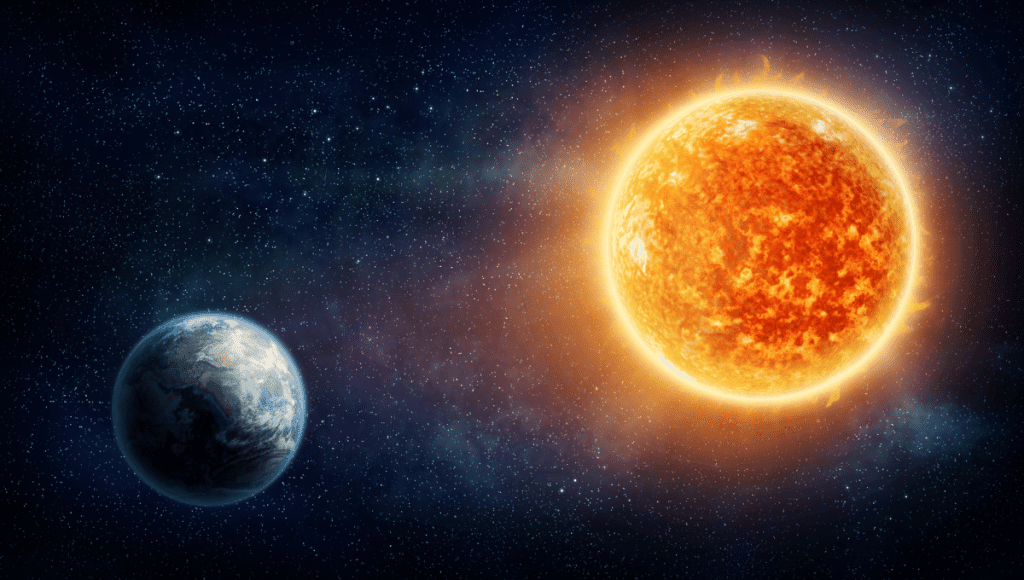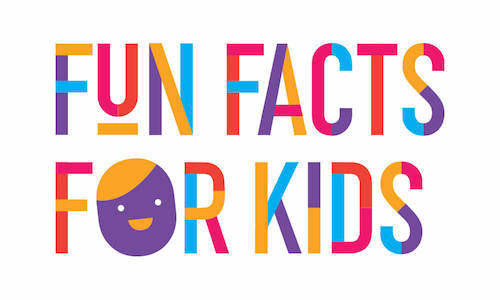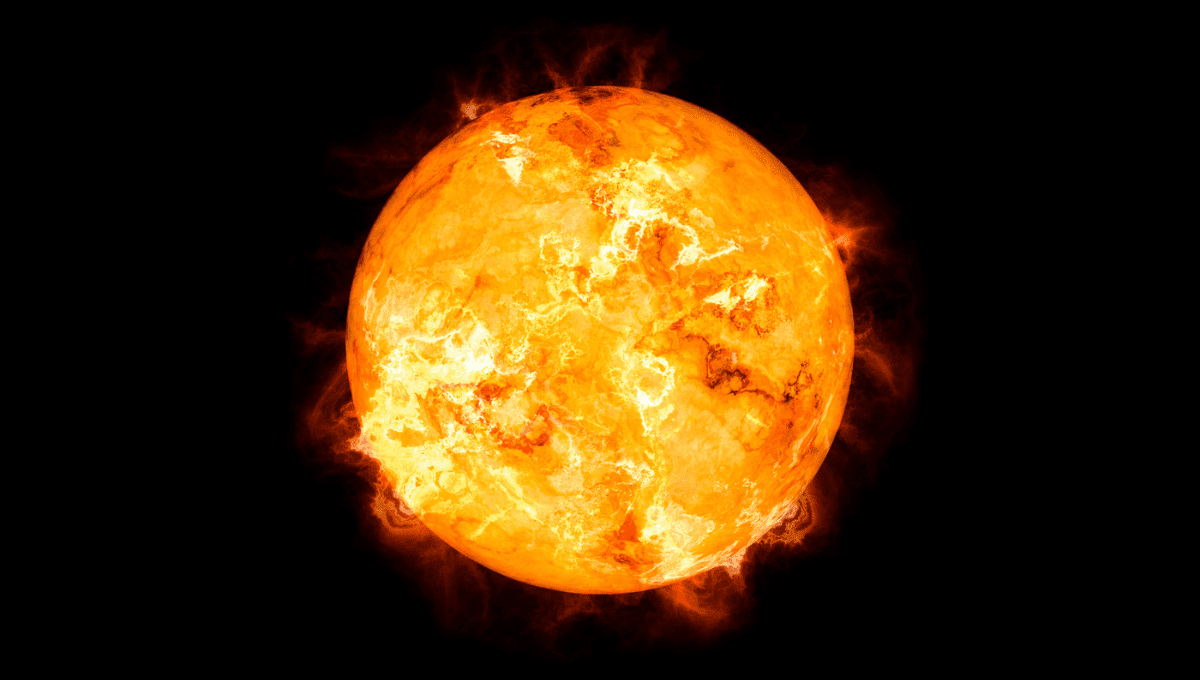If you’re learning space facts or all about the solar system at school, then you need to know what this topic really revolves around. The sun! This gigantic ball of fire is literally at the centre of the universe, and life as we know it would not be possible without it.
But apart from what it looks and feels like, what do you really know about the sun? This article covers all sorts of sun facts for kids, so you can find out more. That way you can easily add more sun information to your project or learn some interesting facts about the sun to dazzle your friends with. Or simply discover some fun facts about the sun that might surprise you!
Find some hot sun stickers for your project book, water bottle or bedroom wall right here!
Hot Sun Facts for Kids
Everything in our entire solar system revolves around the sun. Without the light and heat emitted by the sun, life on earth simply would not exist. If the sun suddenly went out, then we would all be in serious trouble. Luckily, though, there’s absolutely zero chance of that happening any time soon!
Top 10 interesting facts about the sun
Here are 10 facts about the sun to start things off with.
- The sun is about 4.5 billion years old.
- The sun is a star, and belongs to the Yellow Dwarf category.
- The sun’s temperature ranges up to 15,000,000°C. That’s 15 million degrees celsius. For comparison, water boils at only 100°C!
- The coolest part of the sun is the surface, but at nearly 6,000°C you could boil diamonds at this temperature. (Diamonds are one of the hardest substances on Earth).
- Thermonuclear fusion happens as part of the sun’s cycle. This is when helium atoms are created by fusing smaller hydrogen atoms together.
- The name of the Milky Way chocolate bar comes from the galaxy that the sun is part of.
- The sun’s current phase is due to last for about five billion years longer.
- The sun will get evn bigger when it reaches the Red Giant phase. It might even eclipse Earth at that point.
- The sun’s corona (the layer surrounding it) is even hotter than its surface – and scientists don’t yet understand why this is the case.
- Aurora Australis is caused by solar winds. In the northern hemisphere, these also cause Aurora Borealis.

The sun’s heat
The sun is around 15 million degrees celsius at its hottest point, the core. That’s why it’s capable of giving out so much light and heat. Heat and light that we can make use of, here on planet Earth. With a minimum temperature of almost 6,000°C, you could quite rightly say that there are no cool facts about the sun at all!
The 15,000,000 degree heat at the sun’s core takes up to one million years to get from there to the convective zone. This is the outer layer, with a temperature of about two million degrees celsius. By the time this heat reaches the sun’s surface, this has dropped to about 6,000°C.
Once this heat is given off, its temperature rises once more. The temperature of the corona surrounding the sun is around the same as the convective zone – about two million degrees. As the sun’s heat moves further from the core, the temperature drops. Just as you might expect.
What really puzzles scientists, though, is the fact that the temperature then rises again. Even though the corona is further from the core than the cooler surface of the sun. So though the temperature of the surface is lower than the convective zone, the heat then increases once more, making the corona hotter than the surface. A fact that still baffles those studying the solar system!
The size of the sun
The size of the sun is difficult to comprehend. Its circumference is well over 4 million kilometres. It’s also big enough to contain planet Earth around 1.3 million times over. Of the whole solar system, over 99.85% off the mass is taken up by the sun.
Even more incredible is that the sun isn’t anywhere near being the biggest star in the sky. In fact some stars are 700 times larger than the sun. Others may be only one tenth of the sun’s size. So in the grand scheme of things and in terms of size, the sun isn’t actually that big a deal! Even though our lives revolve around it.
The Sun’s composition
The sun is mostly made of gas. Over 90% of this is hydrogen gas, and the intense heat causes some of this to be converted into helium via a process of nuclear fusion. What isn’t gas is plasma, and this heating up is what forces what’s known as a solar wind.
This happens when charged particles escape, entering the rest of the solar system. On Earth, this may be seen as aurora. You may know this phenomenon as the Southern Lights or Aurora Australis. In the northern hemisphere, there are the Northern Lights or Aurora Borealis.
So most of the sun comprises hydrogen, and helium that’s made from hydrogen via thermonuclear fusion. As well as these gases, other gases and elements make up the rest of the sun. These include ones you may be familiar with like oxygen, nitrogen, carbon, iron, magnesium, silicon and sulphur. Look out for them on the periodic table in the science classroom at school!
The rotation of the sun
The sun rotates on its axis, just as the earth does. However as the sun is mostly a ball of gas, it swirls rather than rotating in the same way as a solid planet. This means it doesn’t all move at exactly the same speed. The average time taken for a full rotation is 27 days, but this ranges between 24 and 30 or more days.
More fun facts about the sun
The sun as a star
Stars go through various stages during their lifetime. The sun is currently in a stable phase – which is good news for life on earth!
As with all stars, the sun started as a cloud of dust and gas known as a contracting nebula. Over time, the gravitational pull of the particles resulted in the formation of a protostar. This collapsing cloud has a core at the centre, which heats up due to these particles pulling together. The core is the first step in a protostar becoming a fully-fledged star.
Once the protostar can fuse hydrogen into helium, it becomes a proper star. This has happened over time, as the protostar increased in size. Though nuclear fusion increases the outward pressure of the sun, this is balanced by its own gravity. This is why the sun is in stable phase currently.
Yellow Dwarf
The sun is a Yellow Dwarf star. These are also known as and G-type main-sequence stars, or G dwarf stars. Size is the main reason for this classification, and other Yellow Dwarf stars are of a similar size to the sun. A Yellow Dwarf is a medium-sized star.
A solar eclipse
You might have heard of a solar eclipse – or even seen one. (Though you should never, ever look directly at the sun, as it can damage your eyesight.)
These happen when the Moon is between Earth and the Sun. The Sun becomes blocked by the Moon, and a total or partial solar eclipse occurs. Mostly these eclipses are partial.
A total solar eclipse happens about once every two years, but will only be seen from certain parts of the planet. It might last for a few seconds, or for as long as seven minutes.
Solar flares
Solar flares are the result of an enormous build-up of energy. These explosive events occur when magnetism plus energy creates intense heat. The result is accelerating particles, which are shot into space.
A solar flare gives off X-rays, ultraviolet (UV) light and gamma rays. The flares can last for a few minutes, or for several hours. They look like a bright flash on the sun’s surface when viewed from a safe distance.
Sunspots
Though you might think that the darker spots on the sun’s surface would be even hotter than the rest, the reverse is actually true. These blemishes look darker against the plasma surrounding them because they’re actually cooler. It’s just one of the facts about our sun that can surprise people!
One of the effects of the sun’s magnetic field is to cool some of the radiation released from the core. This is what causes the sun spots. Interestingly, they look a little like the marks on human skin often be caused by sun damage. Especially here in Australia, where both hot weather and pale skin are common.
The Milky Way
The galaxy that the sun belongs to is called the Milky Way. This is just one in about 100 billion galaxies that scientists know about – so far. Maybe one day you might be the one to discover even more!
The Milky Way is 100,000 light years – or a quintillion kilometres – across. That’s pretty big: a quintillion is a million million millions!

The future of the sun
The Solar Orbiter
The Solar Orbiter is a satellite that was developed by the European Space Agency. It was launched in 2020, and is taking the closest pictures of the sun ever. The idea is to study the sun more closely too, by observing solar winds.
The satellite will also take a closer look at the sun’s polar regions. One of the key questions scientists want to answer is how the corona around the sun reaches even hotter temperatures than its surface. They also want to know more about solar winds – and of course about how sun activity affects life on Earth.
The sun’s lifespan
There’s no need to worry about the sun going out. In fact, it will never explode either.
In about five billion years from now, all the hydrogen at the sun’s core may be used up. At this point it will move from its current stable stage, becoming a Red Giant instead of a Yellow Dwarf. This is one of the later phases in a star’s lifecycle. The expansion is caused by helium being fused into carbon, due to even higher temperatures.
After the Red Giant phase, the sun will one day morph into a Planetary Nebula. This is a shell of gases emitted by the Red Giant. A White Dwarf will be at the core of this latter stage.
By this time, Mercury, Venus and even perhaps Earth may have been swallowed up by the sun’s Red Giant phase!
interesting facts about the sun for kids
There’s some pretty cool facts about the sun – and some important facts about the sun too. One thing we know for sure is that we count on if for our survival. But with five billion years to go before it enters a new Red Giant phase, there’s nothing to worry about for quite a while!
Find out more in books about the Solar System!
More facts for kids
If you enjoyed these wonderful and weird facts about the sun, why not check out some of our other space articles?

